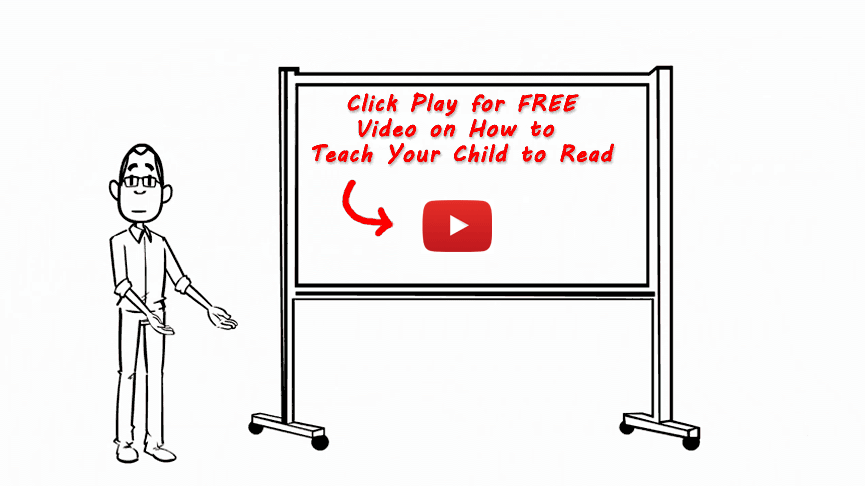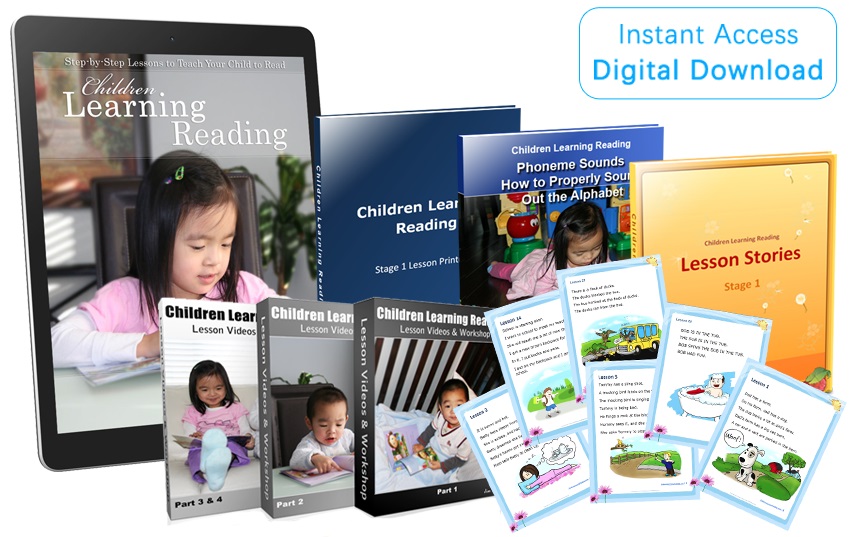Still under construction… (The high quality, colorful worksheets designed to engage children in fun and stimulating phonics and phonemic awareness activities are available to be purchased here along with the Children Learning Reading Program. The low quality Phoneme Isolation worksheets: Coming Soon)
Phonemic Blending Worksheets
After we have provided you with an introduction to Jim Yang’s incredible Children Learning Reading program we will now discuss some great worksheets that you can use to develop your child’s phonemic awareness.
There are five essential components of phonemic awareness and we have worksheets to help your child develop these critical skills. The five are phonemic blending, phonemic segmentation, phoneme addition and deletion, phoneme isolation and phoneme identification and phonemic substitution.
To help with your child’s development with these 5 elements there are worksheets and games that can make this fun and engaging for your child. When your child uses our worksheets they will quickly learn the concepts of these five elements and become proficient in all of the activities.
The Importance Of Phoneme Blending
To really develop your child’s phonemic awareness and turn them into a fluent reader they need to be able to understand the different sounds that letters make and manipulate them into words. The 26 letters of the English alphabet have a number of sounds or phonemes and your child needs to learn all of these. As an example the three sounds /c/. /a/ and /t/ can be blended together to form the word “cat”. This is known as “phoneme blending” and although it comes naturally to those who know how to read it can be quite a challenge to young children just beginning to learn how to read.
For a child to be proficient at phoneme blending they need to be able to identify a word when they are presented with parts of it in isolation. This can be either syllables or phonemes. Phonemic blending is a critical step in a child’s literacy development and will assist them in their general language development as well.
Once a child has grasped the concept of phonemic blending will be able to hear two different words such as “book” and “store” and combine these to make one word “bookstore”. After this the child will be able to take non word syllables that are presented individually and create two or three syllable words from this.
An example of this would be co and py making the word “copy”. Once the child has really mastered phonemic blending they will be able to hear the sounds /c/, /a/, /k/ and /e/ and tell you that the complete word is “cake”.
Here you will see Jim Yang with his three year old son, Ethan, practicing phonemic blending using worksheets:
Why Phonemic Blending Is important
Some children will pick up the smooth blending of sounds very easily without having any choppy pauses in between. But a lot of kids do not find this easy and struggle through school as a result.
Your child’s reading development can be severely hampered if they have not mastered phoneme blending. A common problem for some children is that they know the individual sounds of the letters but they have trouble combining these into complete words.
It is easy to overlook blending as an essential skill for your child’s reading development. Because you are a proficient reader and the blending of individual sounds is natural for you it is possible that you do not realize how difficult this can be for a child just starting out.
Teaching your child smooth phonemic blending when they are very young is very important. If it is left to their school years they may have some bad habits already ingrained and these can be difficult to eradicate.
Fun Ways To Teach Your Child Phoneme Blending
Explain to your child that you are going to stretch out words into their component sound elements and that they have to guess what the whole word is. To make this really fun have some cards with pictures of objects which they will recognize on them.
Present a number of the pictures in front of your child and tell them that you are going to speak like a snail and say the words very slowly such as /cccaaaat/. They have to listen to you and then look at the pictures to guess what word you are speaking.
You can use variations here such as speaking like a robot.
The aim should always be to get your child to hook the sounds together in a fluid movement so that they say the word “cat” smoothly and not a choppy version or segmented like /c/… /a/… /t/.
Phonemic Blending Example
Here is an exercise that is designed to increase the skill levels of a child that has not yet mastered phoneme blending. You will need some pictures of letters and words to conduct this exercise and it is best done across a table.
Explain to your child that today you are both going to practice blending sounds to make words that will help the child to become a better reader. You will require a list of words that require blending and you can use other aids such as blocks.
Sit opposite your child and have a table or other flat surface between the two of you. Lay out pictures of the letters and tell your child that you will point to the letter as you say each sound. Then at the end you will slide your finger across all of the pictures and they will need to speak the whole word out load.
As the teacher you start this process off by providing a model of what you expect your child to do. Use the pictures of the letters and the finger sliding to show them exactly what you are expecting them to do. Speak the whole word at the end.
Now it is time to practice with your child using the same process. If you receive an incorrect response from your child then tell them that they got it wrong and go through the process with them such as /c/, /a/, and /t/ “cat” and then make the sounds of the letters again and ask them to speak the whole word.
For this kind of teaching example to work well you should start with words that have two phonemes or words that only have continuous letter sounds until your child has mastered this. Be sure to provide models for other words and make the task progressively more difficult. Be sure to use the right error correction process if your child makes a mistake.
Worksheets That Will Help Your Child With Phonemic Blending
We offer a number of high quality worksheets that are designed to help your child engage in fun and engaging phonemic blending activities and these can be purchased here together with the Children Learning Reading program.
All of the worksheets are provided with full instructions and they can be printed out so that your child can write on them. Using the worksheets is easy and you will be shown exactly what you need to do.
All of the phoneme blending worksheets are designed to help your child sound out phonemes and then blend these sounds to form words. They will help to develop your child’s spelling and writing skills as well!
Helping your child develop phonemic blending skills is a foundation for their future reading skills. To learn more about the Children Learning Reading program and these great worksheets please use this link.
If you want to be able to teach your young child to read in just 12 weeks then check out this incredible reading program






Hi,
Where can i get this programme (complete one). Can i start with my child who is 3+ years?
Cheers
Lokesh